With the ribs finally finished, Monday saw the day that Zenith was turned over. For the first time in 15 odd years of owning her this was the first time the full hull had been accessible to prod, poke and look at. Many thanks to Rob Stillwell for helping to turn her over.
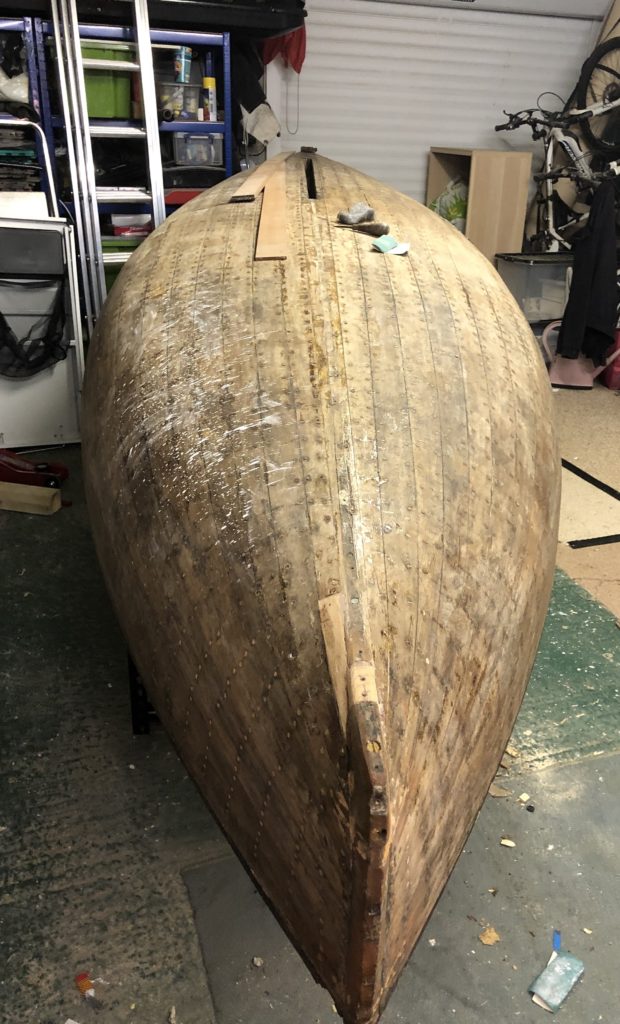
You can see in the picture above that I’d already down a little bit of work with a couple of small repairs at the rear end, but turning her over gives a give view of the work that needs to be done.
On the starboard side theres a hole that is about 4″ x 8″, this covers two planks and will require new planking to be scarfed in.
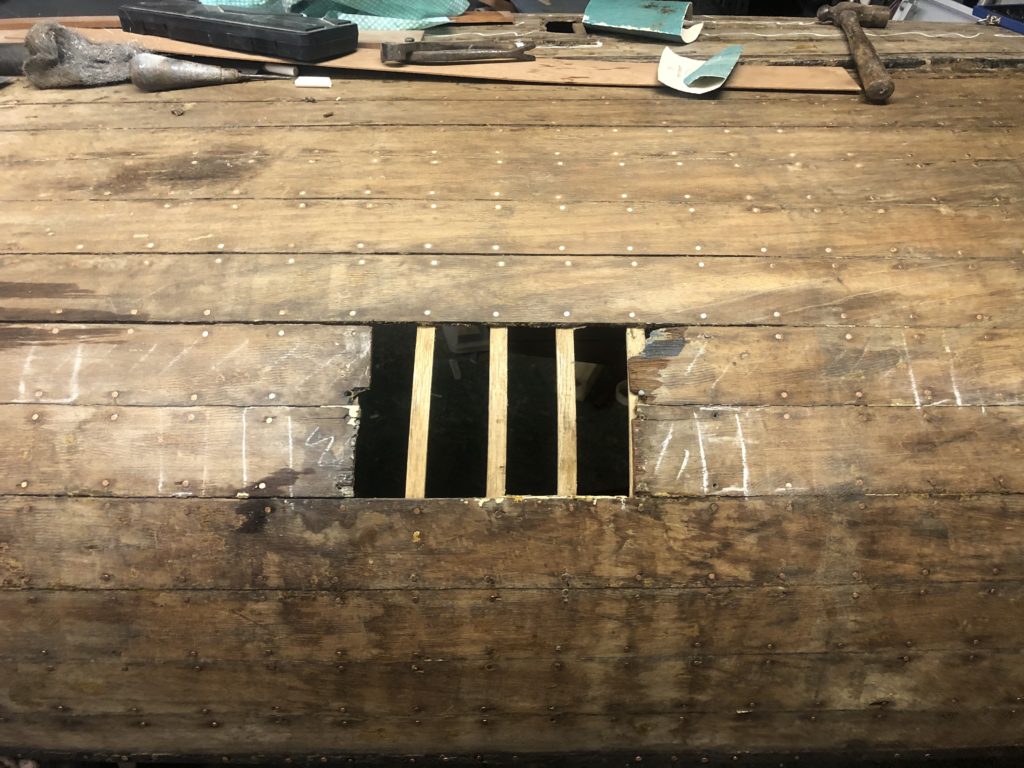
Also on the starboard side there’s as small piece of damage to the garboard, should be able to let in a graving piece here
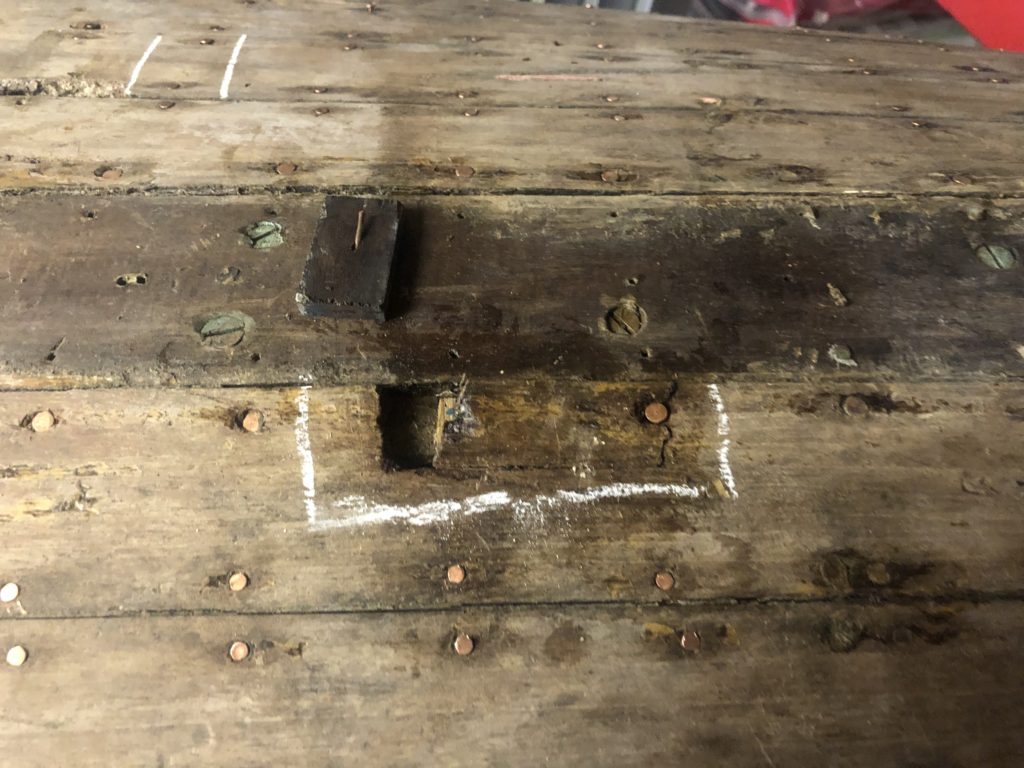
On the port side there’s a hole approximately 6″ x 6″, across three planks plus a little piece of damage to the keel. this will require 3 scarfing repairs to the planks and a graving piece let into the keel.
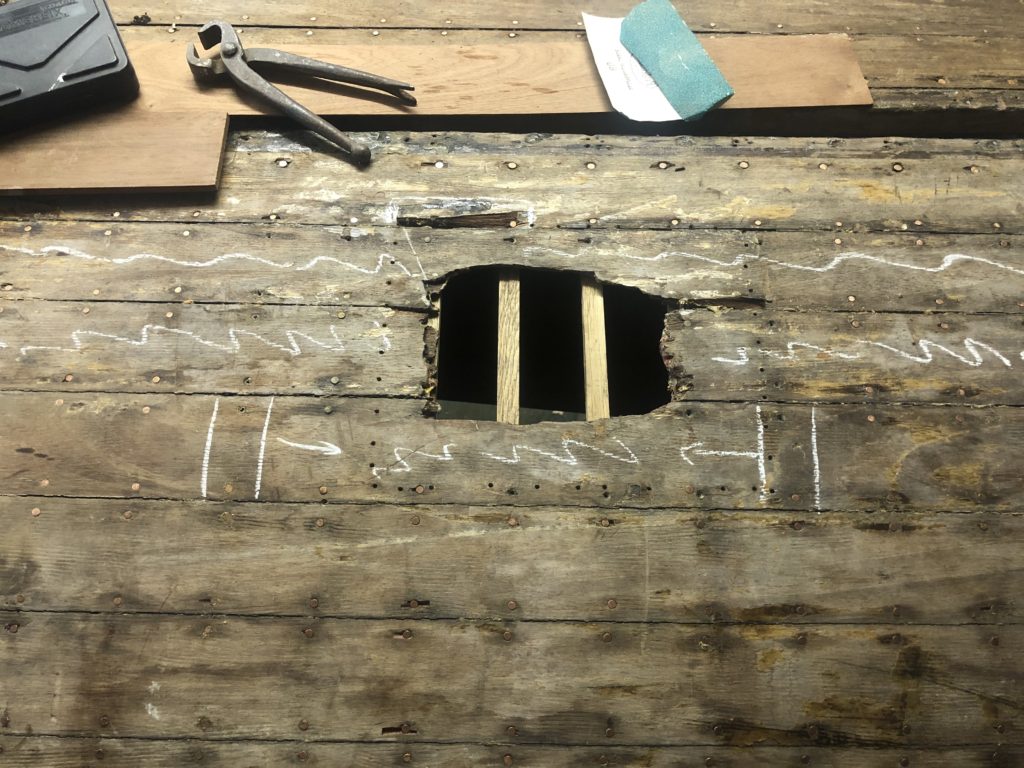
The last piece of damage in also on the port side, forward of the centreboard slot. This requires a short piece of planking to be scarfed in and a graving piece let into the garboard plank
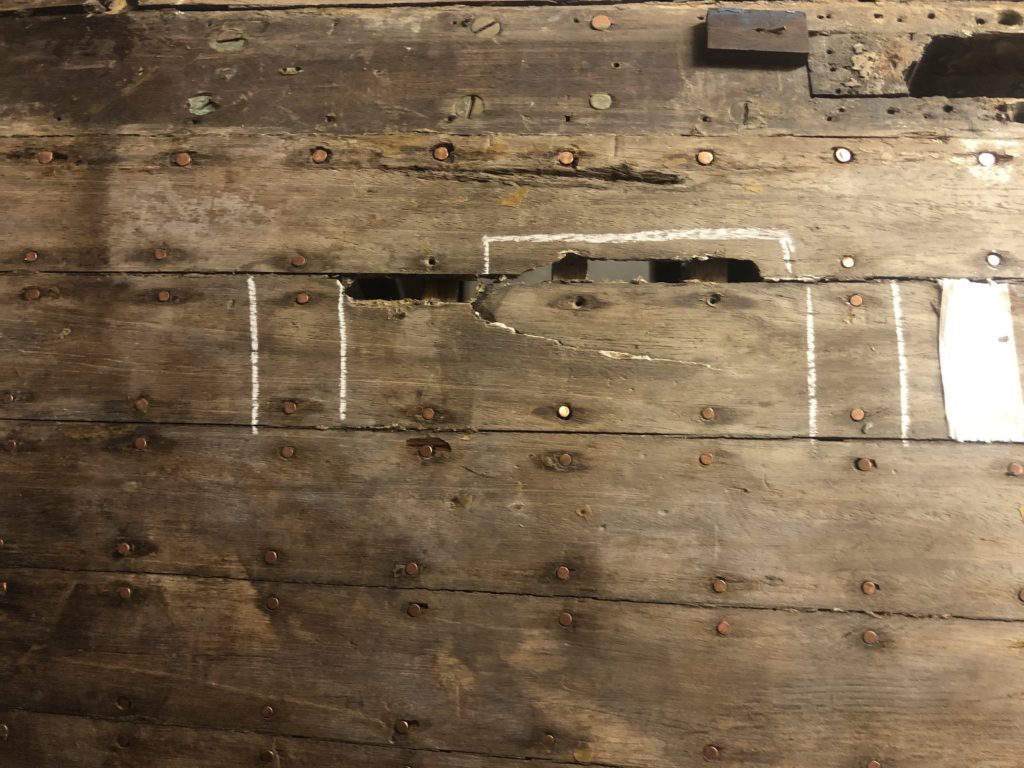
So, before the planking repairs can be done it makes sense to strip the remaining varnish from the hull. Most of the varnish had already gone before I collected Zenith, but the hull has small patches of varnish, has discoloured and needs some attention.
I wand to avoid lots of sanding and the best way of removing bits of old varnish and to smooth the hull has been to use paint striper with wire wool. By leaving the paint stripper on to about 15 minutes I can use the wire wool to remove the stripper and varnish while lightly burnishing the hull. The left hand side of this picture shows the stripped timber against the original finish.
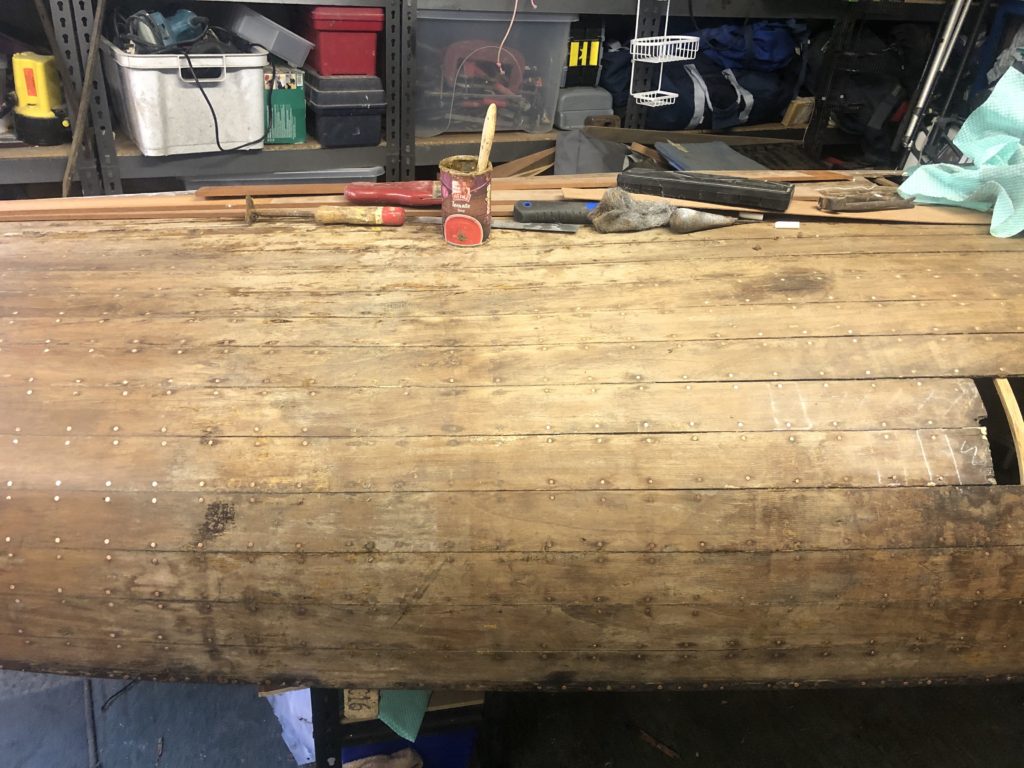
The paint stripper/wire wool approach soon brings some colour to the hull without being abrasive.
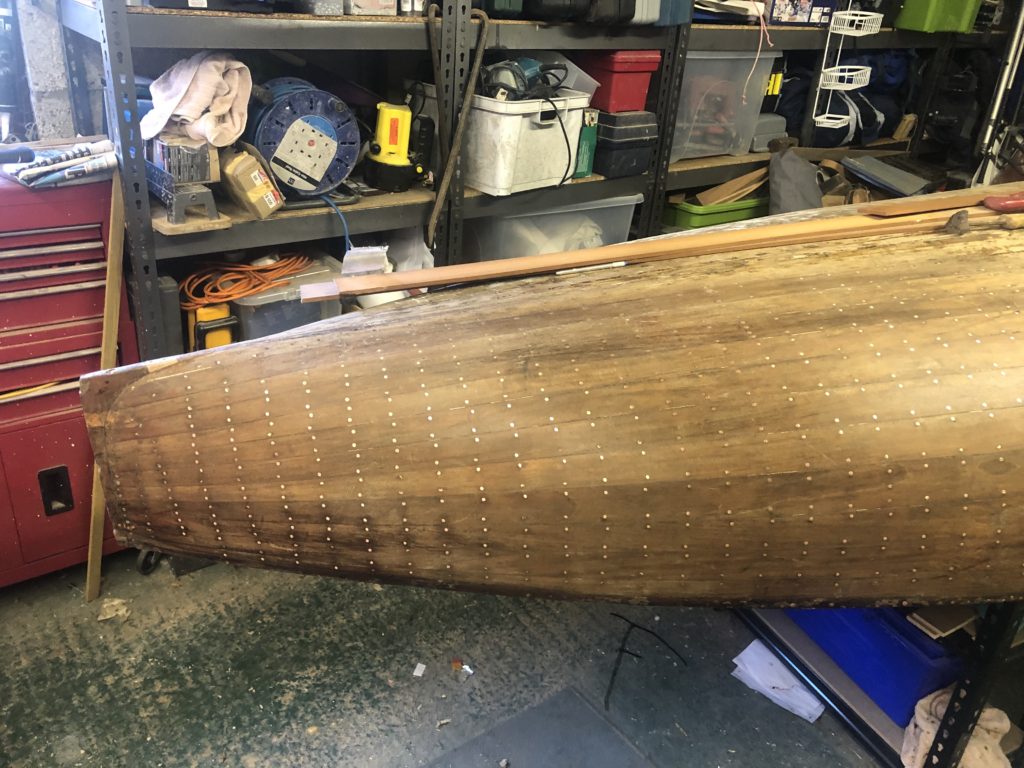
With the varnish removed and the hull getting smoother it is very tempting to wipe on some white spirit just to see what the varnished finish will look like. Quite happy with this.
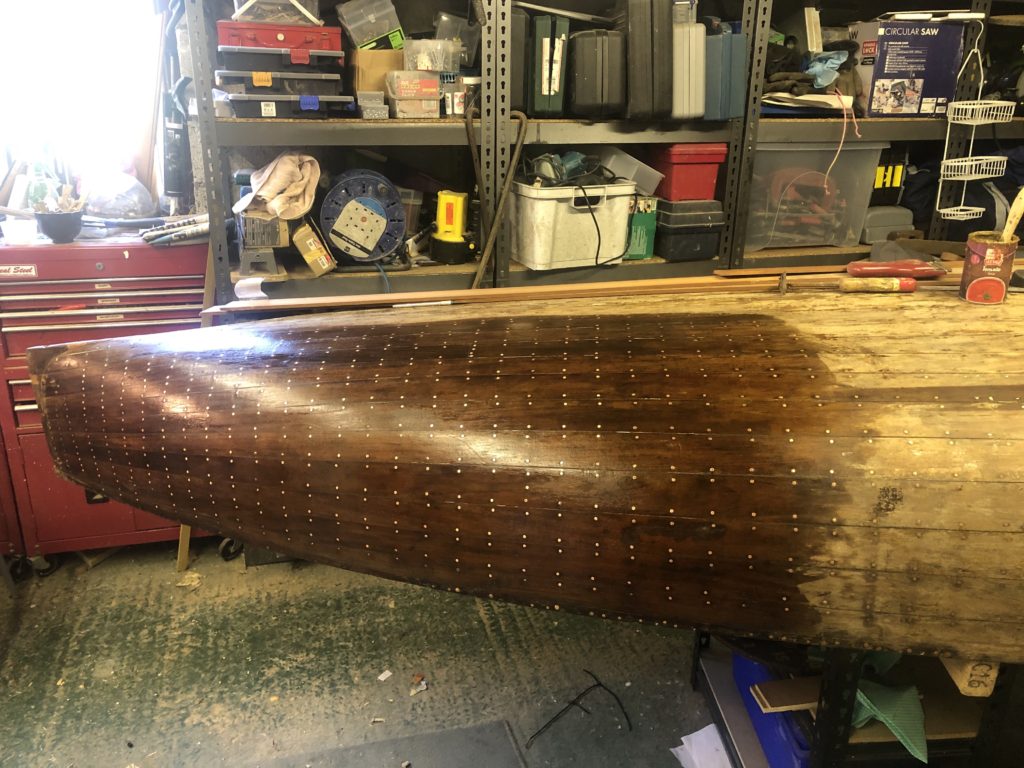
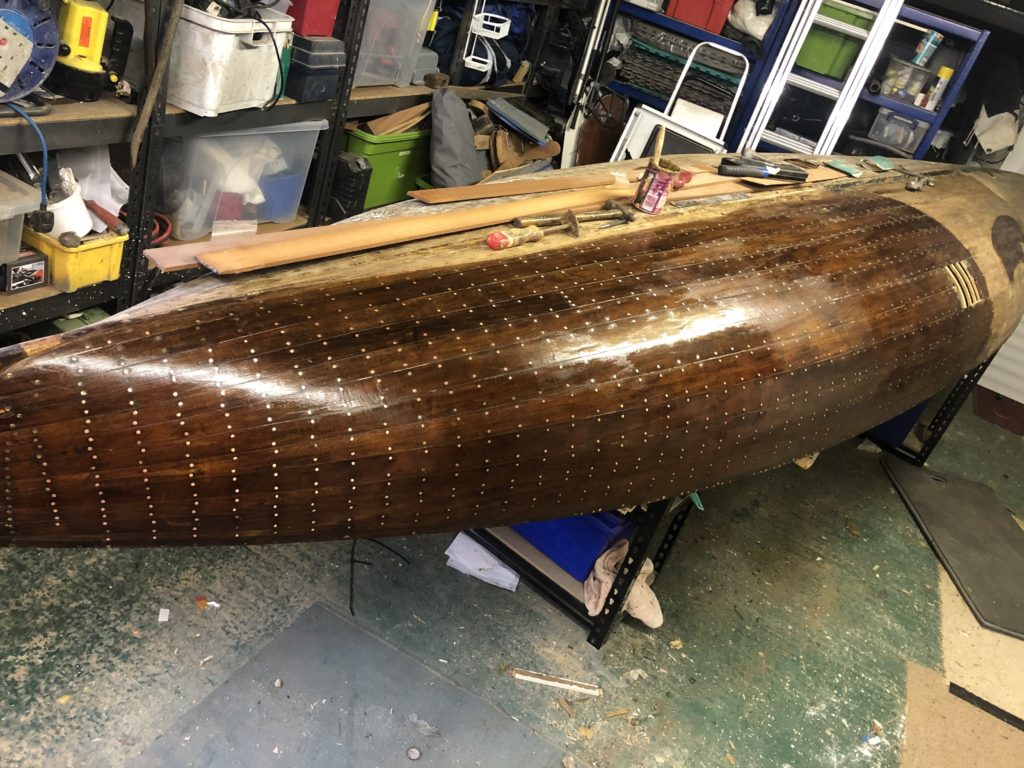

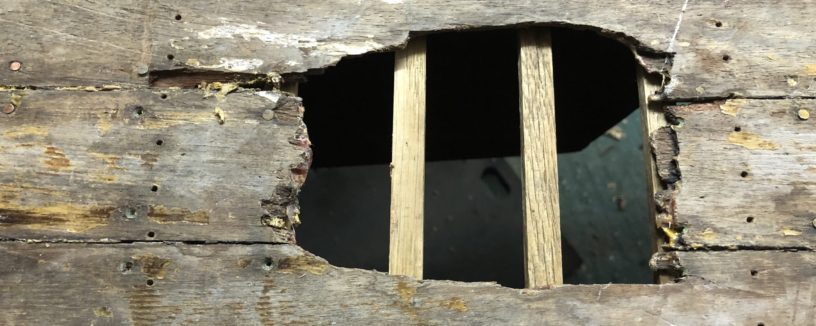
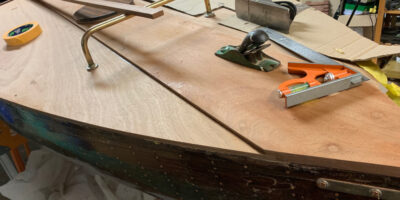
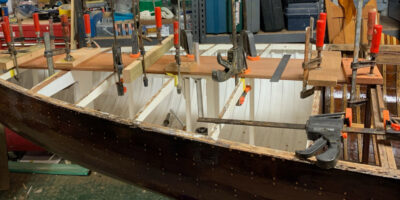
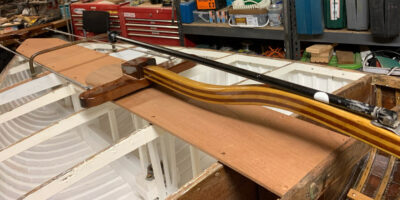
Ralf Wrangö
Your doing fine. What a speed. Love to follow your journey. The hull on my IIIB was in good shape.
richard Nissen
You are doing an amzing job
I used the wirewool and Nitromoors technique when I restored an 1890s single rowing scull.
Now I am atempting to restore an 1860/70s sailing canoe 11ft long and 29″ wide. It has a canvas covered hull which I must restore
Do you anyone who knows about the sailing rigs that were used then. it looks as if the y had a balanced lug and jib
Keep winning with you project
Richard Nissen